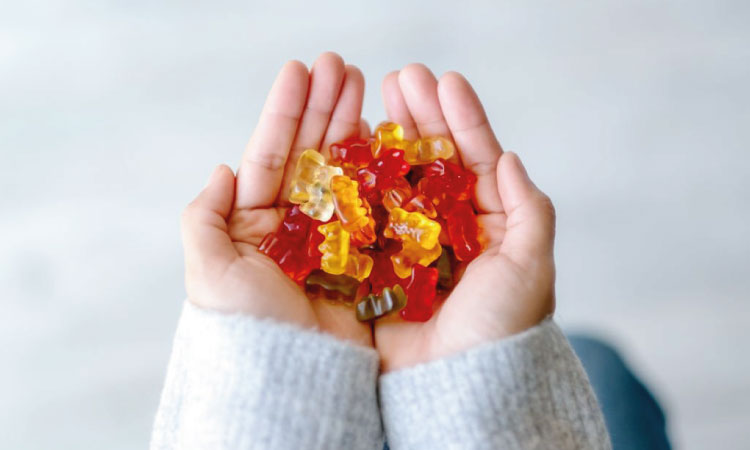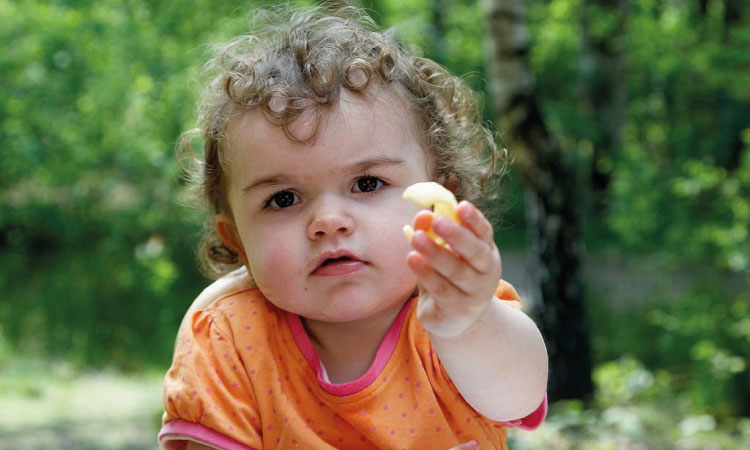If your baby is learning how to chew foods, the probability they might choke is high. Choking can happen at any age and the risk is high if your child is less than five. The size of the airways is only about the size of their pinky finger, which makes it easy for anything small to get stuck. There are a lot of foods that cause choking in toddlers and here we will see about the top 10 choking foods for toddlers.
Prevention is the key factor when it comes to avoiding choking in children. Hence always monitor the kids while they eat. Teach them to chew food completely and avoid talking especially when their mouth is full.
Children need to be encouraged to sit calmly at one place and then slowly eat their food. This will reduce their risk of choking. Also, when you introduce solids to the child, try to offer pureed form first and then transit to mashed and proper solid foods. Parents must also ensure to offer small-sized foods and food textures according to the age of the child.
Here is a list of the top 10 choking foods for toddlers that are potential hazards.
What Are 3 Common Causes Of Choking In Kids?
Most people choke at some point in their life. While this is short-lived and doesn’t pose much danger to adults, this can turn out to be fatal for kids. Children generally explore things and objects using their mouths. Though this is done out of curiosity, it can easily pose choking hazards for babies.
The most common choking hazard for babies is due to food as younger children especially those younger than three tend to put everything into their mouths. Though babies of 6 to 7 months can bite food using their front teeth, they cannot chew it until their molars are developed. This comes around the age of four.
Related Reading: 15 Easy To Make Finger Foods for Babies With No Teeth
A few common causes of choking in kids are:
1. Choking is caused when kids try to swallow larger pieces of food
Offering the right size and texture is the right key to proper feeding habits in children. It is vital to supervise your kids while they have their meals — especially if they are self-feeding as they swallow well instead of chewing. When a large piece of food is taken by the child, it can block their airway easily.
Also, children take time in learning how to eat food. Though they get their teeth developed, the molars — that help in chewing — grow at a later stage. Until then, cut food pieces into small quantities and offer them.
2. Improper eating habits
Children should be taught to eat in a quiet place without any distractions. Teach them to eat slowly and chew food properly. When children get excited while they are eating or when they laugh or eat too fast, chances are high they might choke. That is why it is always recommended not to let children watch TV or other digital media while eating.
Also, large bites of food can make the child gag and choke. Also, remember to supervise your children during mealtime. Choking can happen very quickly and turn things upside down.
3. Walking or running while eating

Most choking incidents happen due to a mistake made while eating. Children should be taught not to run or walk or talk while having food. This can easily get their food blocked in their airways making them choke. Keep the child’s meal time without any rush and preferably use a high chair or other safe place depending on their age.
Do not encourage the child to lie down, and avoid letting your child eat in a stroller or car seat.
Related Reading: 15 Common Foods That Can Be Unsafe For Babies
Top 10 Choking Foods For Toddlers
Choking is a common threat among children — especially those under three. The shapes and the textures of the foods are what cause choking in toddlers. Though babies put small objects in their mouths which is inevitable as they explore the world around them, there are cases where many parents have witnessed their baby choke.
The best way to prevent the child from choking is to introduce solid foods only after the child has completed the age of six months, commonly known as “Annaprashan”– first rice eating ceremony. Also, remember to always accompany your child when eating to make sure they are chewing and swallowing correctly. For children who are six to eight months, offer foods in mashed consistency.
So that you are aware of when to start feeding your little one, we have put together the top 10 choking foods for toddlers.
1. Popcorn
Popcorn comes as the number 1 choking food, due to its hard and crunchy texture. This is something that can easily get stuck in your child’s throat as un-popped corn kernels are incredibly hard which can block the airway easily, which could be fatal for the child. Just for your knowledge, microwave popcorn is on the list of most common unhealthy foods for toddlers.
2. White bread
Though bread is a common breakfast staple in my household, it is one of the lesser-known foods for causing choking hazards in children as it forms a large pasty texture in the child’s throat. This can become stuck causing potential choking and breathing difficulties in children.
3. Crackers or rice cakes
It is easy to hand over a biscuit to a hungry child. However, foods with coarse texture cause a choking threat for the child. Similar to popcorn, these foods are typically dry, which becomes difficult for the child to break down easily.
4. Nuts and seeds
It’s a common question among all mothers- “When can I give dry fruits to my baby”? Molars are a must for children to try over hard foods as it helps them to grind foods into small pieces. If your child hasn’t developed a molar yet, refrain from offering hard foods such as nuts and seeds as improper chewing may lead the child to choke. Almonds, peanuts, cashews, and more are hard to chew and come with sharp edges. You can go for a spread version for safety purposes.
5. Whole grapes
Doctors and experts have reported a lot of choking deaths due to grapes and consider them as one of the high-risk choking foods. Though the texture of the grapes might seem harmless, they are incredibly dangerous when the child swallows them as a whole. The size and shape of this fruit are perfect to best stuck in the child’s airways.
6. Sticky and hard foods

It is advised to refrain from offering the child foods such as candy, gummy candy, and toffee as they are hard to chew and also are on list of foods that can cause cavity in toddlers’ teeth. Also, do not offer hard candies as the child might not know the concept of sucking and could swallow the whole candy. Do not offer foods such as peanut butter in full spoons as the child might find it difficult to move around the hard spoon into their mouths.
7. Hot dogs
If you are wondering what toddlers choke on the most, it is hot dogs! While these foods are easy to offer to kids, the texture, size, and shapes are what matter. When hotdogs are sliced and served as rounds, they are good enough to get stuck into the child’s throat. Be sure to chop it into smaller pieces. Cut each round slice in half and possibly in half again.
8. Raw vegetables
While vegetables are a good choice to incorporate into your child’s diet, raw vegetables such as carrot sticks, celery sticks, apple slices, and cucumber slices can be hard for the child to chew. If your child is less than two, try to shred them or steam or lightly cook them to offer a consistency in which they can eat. You can offer cucumber as long sticks for younger toddlers and as cubes for older toddlers.
Related Reading: 10 Most Important Nutrients For Children
9. Chunks of cheese and meat
It could be tough for the child to chew on cubes or thin slices of steak, grilled chicken, or turkey. Perhaps, it is even tough for adults too. Try to offer shredded, cooked meat or meatball which is easy for the child to chew.
Similarly, go for shredded cheese, crumbled cheese, or very small cubes about the size of a pea when it comes to offering food to your baby.
10. Hard chips
If you find a chip such as a tortilla, potato chips, or pretzels too hard or it breaks as sharp edges then it is recommended you do not offer it to your child. While many are against offering junk foods to kids, in reality, it is what they all want. Instead of eliminating this food, you can offer snacks that are easily dissolvable like puffs and veggie chips, and start introducing hard chips at the age of four, alongside a balanced diet.
Conclusion

While choking is something that every parent tries to prevent, you should also be aware of how to minimize the chances of it. Though your child might be a pro in eating — even potentially hazardous food, no mommy wants to take that risk. Ask any parent who has suffered the excruciating loss of a child due to choking on food.
Always stay vigilant when the child is playing as well as having their food. Provide a proper seating situation with a posture that will help to protect the child’s airway. Remember, the environment in which your child eats can play a large role in the risk of choking.

